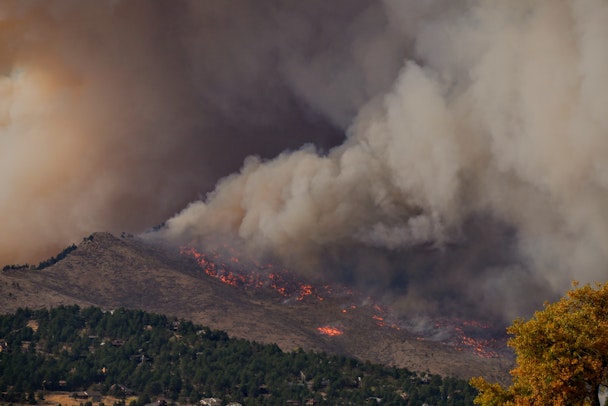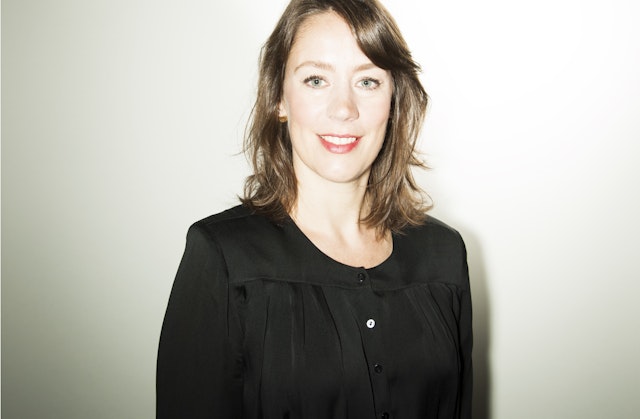‘Urgent optimism’: What the ad industry can add to the climate change movement
This week, we ask agency experts how they’d battle public indifference to climate change messaging.

The Calwood fire, from 2020, was part of Colorado’s worst recorded wildfire season / Unsplash
There’s no shortage of apocalyptic images in the news this week. Wildfires blaze from Rhodes to Algeria. But, as one recent columnist argued in The Guardian, shocking images lose their value. The shot above is from Colorado’s worst-ever wildfire season, back in 2020, but it could be anywhere.
That column suggested the broader climate movement take a leaf from the advertising book to sell its messages better. It’s an interesting thought. So, for this week’s debate, we’re running with it. What, from the advertising toolbox, is the climate change movement lacking?
Advertisement
How do you solve a problem like… making climate change cut through?
Ben Essen, chief strategy officer, Iris: “The first mistake is thinking that any message will have the necessary impact. This is about culture, ideals and the lifestyles people aspire to. More than anything, it’s about people. We’re a social species and are hardwired to respond to people-based narratives. So let’s tell stories about people. About the heroic firefighters losing their lives fighting the heat. About the frequent flying villains whose high-carbon lifestyles are causing suffering for millions. About the ‘reckless’ (a favorite Daily Mail word) governments gambling people’s futures for a few votes. And about the selfless people around the country sacrificing their desires for the greater good. When we tell this story with emotion, drama and a good dose of social judgment, people will realize which character they want to be.”
Helen Hughes, sustainability director, Design Bridge & Partners: “It’s no surprise that people don’t engage with current marketing efforts around the climate emergency. After all, when did a burning platform – reinforced by the same imagery of ruined habitats and words of warning over and over – look like something you would want to run towards?
New narratives shouldn’t ignore the situation at hand but should leverage the engaging and human storytelling behavior that marks the basis of branding; and as a means to make connections with people on their terms versus those of an abstract and siloed category. Creative marketing needs to exhibit distinctive and meaningful values that both differentiate and align with people’s own values and willingness to make change for the better.”
Tom Firth, founding partner, M&C Saatchi Life: “The data we see suggests the message is getting through – people know it’s happening and they’re worried about it. And agencies have done some outstanding creative work to help land that. We’ve raised the issue very well. But we have utterly failed, as an industry, to enable change. Firstly, we must start to ask much harder questions about the impact of what we’re selling. But our crucial task is to give our clients confidence that there is a market for dramatically ‘better’ products so they invest more and accelerate innovation – because we can make better irresistible. This is our power.“

Victoria Fischer, joint head of film and sustainability lead, House 337: “Advertising has a role in laying in the cultural narrative about climate change that can set and reset norms of behavior. Too often, shock tactics are a blunt default approach. What these shock tactics forget is the power that advertising can have to normalize the behaviors that people can adopt to help change the climate crisis’s direction. It shouldn’t just be ads about the climate crisis but about the power of every second we have on the screen, every story we tell and everything we produce. What can we change if we put conscience and the climate crisis into consideration?”
Advertisement
Josh Bullmore, chief strategy officer, Leo Burnett: “The climate change movement needs to channel advertising’s superpower: urgent optimism. Why? Because climate change has an image problem. PopIndex, our national survey, shows that it’s seen as intimidating, complicated and distant. And humans evolved to deal with immediate threats like saber-toothed tigers, not distant ones. So people put off acting on climate change until tomorrow. That’s why we need urgent optimism – to paint a picture of a brighter side of change that people will want in their lives now. Urgent optimism can flip climate action’s image: from a problem to worry about tomorrow to an opportunity to grasp today.“
Camilla Yates, strategy director, Elvis: “A great deal of climate change campaigns are preaching to the choir – activists talk to other activists with increasingly complex statistics and abstract concepts, without considering how to make them relatable to the general public. It sounds counterintuitive at first, but borrowing from the world of FMCG marketing could really help. Climate change is a ’mass’ problem, so let’s apply the tactics we would normally apply to ’mass’ brands. We need to resonate with people with low engagement, understanding, and involvement. We need to create simple, emotive, visual messages that tap into people’s underlying desires, to make the climate revolution irresistible.”
Suggested newsletters for you
George Ince, head of influencer marketing, BBD Perfect Storm: “Influencers build online communities based on shared characteristics with their audience: who they are, what they care about and want. The influencer-audience relationship is a deeply human one. With environmental experts using largely unrelatable, technical language that the majority of their intended audience can’t reasonably understand, influencer-led comms offer a vital tool in re-humanizing the climate change marketing problem. Influencers show marketers what matters most in their audiences’ lives. Activists should tap into this value hierarchy and learn how to communicate, in human terms, how climate change impacts their audiences today and tomorrow.”
Sally Pritchett, CEO, Something Big: “Like all good communications, the message needs to resonate. The challenge with a lot of sustainability and climate-related content is that it’s aimed at a specific target group, those that are not yet taking positive action. This rallying call most resonates with activists who are already anxious about climate change and are least important to engage, given they’re already early adopters. There’s a potential key to shifting cut through by ignoring the deniers and targeting comms at the more middle of the road audience to increase their action.”
Andy Harvey, co-founder and creative director, Communion Studio: “We could talk about changing the sentiment and changing the tone, but I think what the climate change movement has is a tangibility problem. People feel shamed and overwhelmed and numbed. They want to be part of the solution, but they still want things in their lives, they still want to do things. Creative marketing can help people navigate towards choices that are future-positive. There are more and more fantastic, innovative products being developed. I mean – where’s the ‘Go Compare’ for the most ethical choices on the planet? It’s about empowering consumers and building desire – not just to accumulate ‘stuff’ – but for more earthed, connected experiences.
Jake Goodman, managing partner, Leagas Delaney: “The problem when it comes to communications is similar to the one we find in politics. Human beings are not rational. Statistics are not emotional. This is why every Planet Earth series does more for behavioral change (remember plastic straws?) than 100 lectures on the subject. I actually feel more positive than Jonathan Freedland’s article suggests – I believe the overall weight of evidence is finally (and belatedly) sufficient in the global psyche to cause a tipping point – and communications will become oxygen on the right kind of fire, not a voice in the dark.”

Katie Harrison, co-founder and partner, WRTHY: “A new solution? Women. Much of the current climate discourse is led by men. It is communicated in data, science and facts with ‘big tech breakthroughs’ touted by (mostly male) billionaires as the solution. Yet all the data also points to the fact that women outperform their male counterparts in moments of crisis. Where women have higher social and political status, their countries have 12% lower CO2 emissions. Nations with larger proportions of women in their legislatures are more likely to approve environmental agreements. When more women are involved in group decisions about land management, the group conserves more. Based on the belief that ‘when women lead, action follows,’ we’re working with Mary Robinson, the former president of Ireland and chair of the Elders and Connected Women Leaders, to launch ProjectDandelion.com, calling on women of the world to unite in action for a climate-safe world.”
Sarah Collinson, managing director, Joan Creative: “Climate change is the biggest challenge humanity is facing. And that’s the problem. The bigger and more impossible the message, the more difficult it is to land. The Greek heat doesn’t feel relevant when trying to work out how to pay that healthcare bill due tomorrow. We will not force attention with one message. We must be highly targeted and contextual to people’s reality. Whether that’s using humor in our campaign Florida Man to talk to Floridians or Greenpeace’s Grand Theft Auto to reach Gen Z, we must meet people where they are to create meaning. No more dying polar bears, please!”
Dan Ayers, group account director, ScienceMagic: “Playfulness. That is what the climate change movement is sorely missing. Marketeers have understood for decades that playful humor can be supremely powerful in positively influencing behavior. And with rising levels of climate anxiety and desensitization to climate change messaging among consumers, rather than brands fearmongering people into changing – which clearly isn’t working – why not try tickling them instead? Most brands fear misstepping on ESG topics, but there’s no misstepping on a dead planet. So, if addressing humanity’s greatest emergency in a playful way is what we need to do in order to truly activate communities, shouldn’t we at least try?”
Want to join in future conversations? Email me at sam.bradley@thedrum.com.

